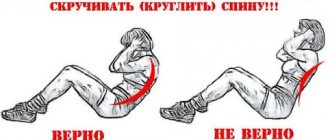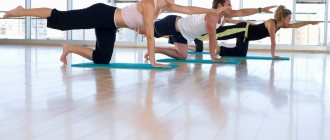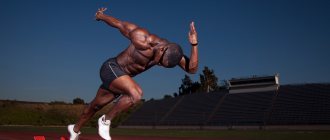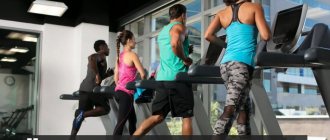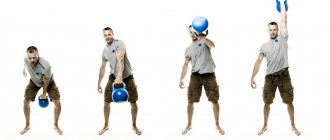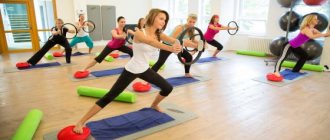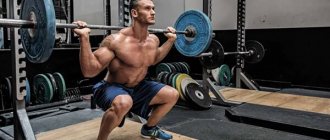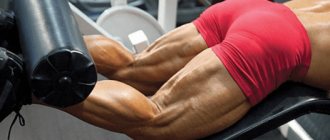The neck is one of the most vulnerable places
The neck is indeed very vulnerable and requires careful treatment. The vessels that supply the brain pass through it, as well as the nerves through which signals that regulate our activities (motor activity, for example) enter the body.
Our neck is under tension most of the day, since its muscles need to continuously support our head, the mass of which reaches 2 or more kg. Normally, the muscles cope with their task. But add to this the uncomfortable and incorrect postures that we tend to take, and being immobile for a long time. We load the muscles unevenly, depriving them of rest and complicating blood supply.
The first problems with the cervical spine arise precisely due to excessive fatigue of the neck muscles. Typical symptoms are stiffness and muscle fatigue. This primary problem is solved with a simple massage, which I will talk about a little later.
Often people do not pay attention to such symptoms, so the conversation then turns to treating the problem that has transformed into a disease - cervical osteochondrosis.
Hence the importance of neck exercises for osteochondrosis.
Features of neck training
Always focus on contracting the neck muscles. If you just shake your head, it will be of little use.
You have to Squeeze your neck muscles to get them to light up and start growing.
One big mistake is lifting your entire torso as if you were doing abs.
No. You need to isolate your neck!
Make it so that ALL THE WORK is done only by the neck - and not a single muscle helps it.
When you just start training it, you will have a strange sensation in your tongue and throat.
It's like there's a fire in there and you can't swallow.
This is completely normal because the muscles of the tongue and throat muscles are connected to the neck.
Over time, you will come to love this feeling because it means your neck muscles are working well and growing.
If you don’t feel this burning sensation in your neck, tongue and throat, then you haven’t trained well! Next time, squeeze your neck harder.
How physical therapy can relieve pain
With the development of the acute stage of cervical osteochondrosis, first of all, it is necessary to relieve pain. When the pain symptoms go away, you can begin treatment with exercise therapy. This is a set of exercises for cervical osteochondrosis, which includes a number of head movements, including isometric exercises for the neck.
Gymnastics for the neck for osteochondrosis is mandatory. Without it, treatment will not have the desired effect. After all, without a strong muscle corset, the spine will continue to suffer from the vertical pressure of gravity.
The natural root cause of all spinal diseases is gravity. Its vector is perpendicular to the surface of the earth. Now let’s imagine what happens to the spine if this load does not press strictly vertically on it. For example, this happens when we sit hunched over at a table, immersed in various papers.
The neck is curved, tilted relative to the vertical by 45 degrees, if averaged. Due to the heaviness of the head, there is a slight diagonal displacement of the vertebrae relative to each other. Intervertebral cartilage experiences an unusual load for them, and over time they wear out and become deformed.
Normally, even this position is compensated by strong neck muscles, but what strong muscles can we talk about when a person barely moves? That is the problem.
If we delve deeper into this issue, then nutrition, or more precisely, the lack of joint-forming substances in food complicates the situation. Cartilage tissue is already renewed slowly, and if the body lacks the necessary substances, it has nothing to renew from at all.
So, the root cause of osteochondrosis is gravity. But strong muscles can prevent this process. This means that a secondary cause of osteochondrosis is weak neck muscles. Hence the conclusion: if cervical osteochondrosis has begun, exercises will help solve this problem.
Exercise therapy strengthens the neck muscles, relieves tension and improves blood circulation. This is an effective method for treating osteochondrosis and preventing its progression in the future.
Thus, the problem can be solved if we comprehensively address all the causes of its occurrence:
- Strengthen your neck muscles with neck exercises for osteochondrosis. Exercises for cervical osteochondrosis will be given below.
- Avoid incorrect postures and prolonged sitting motionless in one place.
- Use special joint supplements or develop a complete diet for yourself.
It's better to do it all at the same time.
In addition to osteochondrosis, another unpleasant thing can happen to the neck - hypothermia. In this case, no exercise will help you until the inflammation goes away. Do not delay treatment for too long.
And another option is limited head mobility. In this case, you need to carefully knead your neck and do it for the neck with osteochondrosis to the amplitude that allows you to perform the movement painlessly.
Anatomy of the cervical spine
The cervicothoracic part of the body consists of fifteen muscles. Ten of them are directly related to the cervical muscles, and five are passing through the upper body. Both types are divided into median and lateral.
Due to the lateral muscles, the jaw and larynx function. There is no point in pumping them up. Due to the lateral cervical muscles, the head can tilt, and they are also responsible for the volume of the neck. This muscle group is trained to pump up. The lateral muscles include superficial and deep groups. Due to the deep ones, a person can breathe and tilt the skull, while the superficial ones protect important parts of the spine and trachea. They also take part in turning and tilting the head. The deep group includes the four scalene muscles, the superficial group consists of the subcutaneous muscle and the sternocleidomastoid muscle.
The importance of training
For a man, a strong neck is an indicator of health. The neck should look trained, with well-developed chest muscles, broad shoulders and toned arms.
Neck training is important for women, due to the fact that gymnastics for her will allow her to pump up a flabby neck, avoid the appearance of a double chin, and generally improve her condition. If a girl pays attention to her décolleté area, she will be able to keep her neck youthful for a long time.
Also, if the muscles are well developed, this will help avoid the appearance of osteochondrosis and neck pain. Since there are numerous vessels and nerve endings in the neck, training it will ensure normal intracranial pressure and protect against spasms and headaches.
About dizziness
Thinning of the intervertebral discs in the cervical region leads to the fact that nerve endings can be pinched. In addition to nerves, blood vessels are also affected. This leads to a lack of oxygen supply to the brain and manifests itself in the form of dizziness. There are other symptoms - headache.
There are also exercises for dizziness with cervical osteochondrosis. Essentially, they are the same as for osteochondrosis. Their purpose is to stretch tight muscles, strengthen them, and release nerves and blood vessels from clamps.
In general, any physical exercise for osteochondrosis (without weights) helps improve blood circulation throughout the body, including more intense blood exchange between the body and head. Our brain receives more nutrition and oxygen, and this affects productivity.
Exercises with weights are not recommended for cervical osteochondrosis. They certainly won’t save you from osteochondrosis of the cervical spine, but they can speed up the process of cartilage degradation.
In case of various diseases of the spine, exercises with weights, in general, should be performed with great caution. Depending on the disease, movements that place a vertical load on the spinal column, bending the back, etc. may be excluded.
Precautions and contraindications
Before starting training, be sure to consult your doctor. And if you are not sure that you can handle the set of exercises on your own, sign up for classes at the gym, where you will work under the supervision of a trainer. Under no circumstances should you engage in neck pumping if you have such diseases as:
- cervical osteochondrosis;
- hypertension;
- tachycardia;
- infectious infection and so on.
If during training you feel pain or discomfort in the neck area, immediately go to the clinic. The neck is no joke!
How long to do exercise therapy?
Human laziness has no boundaries. Often we stop practicing as soon as the problem goes away. A man does fitness while losing weight. As soon as he achieves the desired result, everything stops. With diseases, this approach is not only ineffective, but also risks the return of the disease.
To prevent cervical osteochondrosis, you need to periodically exercise your neck. This is easy to do at home. Plus it doesn't take much time. The process is very pleasant - the feeling of warmth and relaxation in the muscles will not take long to arrive.
You can also buy a neck brace and wear it during acute periods. But there are some subtleties here. Once you get used to artificial support, you can live your whole life like this, because the corset supports your head instead of your muscles. And this is not at all beneficial for the cervical spine. The muscles eventually lose their tone completely.
The therapeutic effect of exercise against cervical osteochondrosis lasts from 2 weeks to a month. If you stop exercising as soon as your muscles lose tone again, you risk experiencing headaches and difficulty turning your head again. Therefore, exercises to strengthen the neck muscles in this case play a huge role in maintaining comfort.
So decide whether to do exercises for osteochondrosis or not.
Real Bull Neck Workout
Now that you're ready for the real workout, you have a choice.
First type of neck training:
You can continue to work on the preparatory program:
- 100 neck curls
- 100 neck extensions
- 100 lateral bends to the left
- 100 lateral bends to the right
Only now you begin to press your hands on your forehead, side and back of your head (as in the video above) with just enough force to last you 100 repetitions, neither more nor less.
If you did it 100 times and you still had some strength left, you had to push harder.
If you gave up before reaching 100 times, then you had to push less.
It’s okay if you’re tired over 70 times and you can’t complete a set with weights. Just remove your hands or plate and complete the remaining 30 reps with your body weight.
The main thing is to get it 100 times. The neck loves a lot of repetition.
Second type of neck training:
This workout is more intense and less time consuming.
I recommend it to those who have already trained for at least a few weeks.
You will do:
- 20 easy reps
- 12 medium-heavy reps
- 8 VERY HARD reps
- 20 easy reps
You do the first 20 repetitions with very little pressure on your forehead, without working to failure.
This approach is designed to warm up your muscles.
Rest 1 minute.
The next approach you do is of medium intensity. You reach a slight failure.
Rest 1 minute.
The third approach is the most important. You press on your forehead with such force to do, or rather squeeze out, exactly eight repetitions.
By the eighth rep, you should feel like if they put a gun to your head to do another rep with at least your body weight, you won’t do it.
Rest 2-3 minutes.
The last approach for the final driving is light-medium intensity. You apply gentle pressure to your forehead and squeeze out the last 20 reps from your neck.
According to this principle, you work first the front part of the neck (flexion), then the back part of the neck (extension), then the left side and right side in any order.
Gymnastics complex for the neck
It is better not to do any exercises during exacerbation of cervical osteochondrosis. Acute symptoms should first be relieved by your doctor. After all, if it hurts to move your head, all the gymnastics will be painful.
The most effective exercises for cervical osteochondrosis are very simple: head movements plus isometric muscle tension. Everything is done very simply - at home, at work, on the road.
Here is an approximate set of exercises (let’s agree that the starting position is to sit straight, hands on knees):
- In the starting position, smoothly turn your head to the right all the way, then to the left. Feel your neck muscles stretch. The nuance here is this: turn your head and try to turn it a little further without jerking, maintain this tension for 5 seconds. In general, it is better to start any exercises for the spine with exercises to strengthen the neck muscles. These include developing her flexibility and strength. Make 5 turns in each direction.
- Now tilt your head to the side so that your ear is closer to your shoulder. No need to raise your shoulder! Just like in the previous movement, hold the tension. If you have a flexible neck, use your hands to help push your ear toward your shoulder. If it hurts, make movements with a painless amplitude! Perform 5 tilts to the right and left.
- Now make circular movements with your head clockwise and counterclockwise. 8 movements in each direction. Slowly! You can support your head with your hands. This is an effective gymnastics for neck osteochondrosis.
- The warm-up is over, and now the strength exercises: with your right hand, rest on your right temple. Try to tilt your head to the right, and use your hand to prevent this movement. Create such an effort that it is hard, but your head moves in the right direction. 10 times in each direction (to move to the left, use the other hand, respectively).
- Now grab your head from behind (occipital region) and, through the resistance of your hands, try to tilt the back of your head 5 times, then move your head back 5 times in a horizontal plane. A total of 10 times will be released.
- Now rest your palms on your forehead and tilt your head down through the resistance of your hands (pull your chin towards your chest). Do this 10 times, then move your head forward through resistance in a horizontal plane (like pigeons when walking).
- Finally, you can stretch your trapezius by raising and lowering your shoulders. Raised it - held it for 2-3 seconds (pull it up), lowered it - relaxed it. Do 10 repetitions.
- Stretch your neck in different directions, the gymnastics is finished. Do all this once a day. This is an excellent exercise for the neck with osteochondrosis.
What other exercises can you do? For example, for neck flexibility. These are also exercises for the neck muscles, but they also stretch the tendons. This will make your neck more mobile.
Share your opinion! How do you fight cervical osteochondrosis?
I try to sit upright and periodically do a warm-up.
37.21%
I do gymnastics regularly - it really helps! Discipline is important here.
16.28%
When pain occurs, I take painkillers. I don't do anything else.
20.93%
It is important to be able to relax - all pain is from overexertion.
25.58%
Voted: 43
Additional exercises for flexibility
This exercise should be performed not only for osteochondrosis of the cervical spine, but also, in principle, at the age of 30–40 years. At this age, the degradation of muscle fibers begins, the loss of flexibility gains especially rapid momentum if you do not take care of your physical form.
- Stretch your chin to your chest, help your head with your hands.
- Use your hands to tilt your head to the side so that your ear touches your shoulder. Stretch the side of your neck with your hand.
It's enough. And remember what you can’t do with cervical osteochondrosis – exercise through pain.
Exercises to strengthen the neck muscles
- Stand up straight and straighten your back. If it’s difficult to keep your back straight at first, do the exercise while leaning on the wall. The top of the head should look up. This is the starting position. Clasp your hands. Place your palms on the top of your head and tilt your head forward slightly. Then try to return your head to its original position, providing resistance with your hands. Do the exercise for 30 seconds, then relax. Repeat. It is advisable to perform this exercise in front of a mirror at first to see how the neck muscles work.
- Get back to the starting position. Bring your left hand over your head and place it on your right ear. Bow your head towards your left shoulder. Try to return your head to its original position, resisting with your hand. Do the exercise for 30 seconds, then repeat on the left side of your neck. Then - again for the right and again for the left.
- Take a chair and sit on it, resting your hands on the seat. Keep your back straight. Then bend your spine toward the back of the chair, tilting your head as far back as possible. Sit in this position for 30 seconds. Return to the original position and perform the exercise a second time.
- Starting position: standing, as in the first two exercises. Turn your head as far to the left as your neck muscles allow. There may be some discomfort at first. Look over your shoulder. Count to 30 and turn your head forward. Repeat for the right side.
Do I need to download it?
Before answering the question of how to properly pump up your neck, let’s find out for whom this is generally advisable.
Targeted pumping of the neck muscles is not common. We are not talking about physical therapy exercises, but about the additional development of the muscles in this area.
A strong neck is usually needed by wrestlers. Bodybuilders usually do not pay special attention to this part of the body. And this is primarily due to the danger of damaging the spine.
The cervical spine is the most fragile, mobile and weakest place in our spinal column. Damage to it will lead to consequences of varying severity. And it’s very easy to damage your neck – just take too much weight.
If strengthening your neck muscles is important to you, then I'll tell you how to do it safely. But first, pay attention to those points in the presence of which neck training should be limited only to exercise therapy exercises.
Exercises with straps and weights
Using the strap, you can effectively pump up the neck muscles.
How to pump up your neck at home with dumbbells:
- We lie on our backs, on a fairly hard sofa or couch, and hang our heads so that the back of our heads hangs in the air. We attach the available weight to the strap that is attached to the head (you can make the strap yourself, you can buy it). We take our head back and lift it, pressing our chin to our chest. We do 10–12 such movements.
- Now we lie down on our stomach, do the same thing, but in reverse order - we lift our heads up from below (we move them back).
- Lie on your right side and bend your neck with weight to the left.
- We lie down on our left side and repeat the same for the other side.
How to pump up your neck in the gym - exactly the same. It’s just more convenient to pump up muscles in the fitness room - there is a good row of dumbbells, there are straps, and there are as many weights as you need. Therefore, you can choose the optimal weight for yourself and do the exercise on a comfortable bench.
Since the neck contains the most common muscles, people want to know how to quickly pump up this area. And here a serious problem arises - it does not swing quickly. Due to the vulnerability of the vertebrae, it is generally impossible to work with large weights.
So, if you don’t have a naturally powerful neck, it will take you a long time and with difficulty to build it. All hope is in the upper trapezius. They are much easier to pump up.
The neck muscles are just like any other muscle. But due to the vulnerability of the spine in this area, you cannot give them the maximum load as your legs or biceps. In general, you can train your neck 1-2 times a week.
You need to perform the exercises carefully. Avoid sudden movements. Warm up your joints slowly and gradually before exercising. After exercise, be sure to stretch. There is no need to perform sudden and rapid head movements during warm-up.
With these simple tips you will reduce the risk of damaging your vertebrae to a minimum.
If you neglect these tips, very quickly the question of how to cure your neck, without pumping it up, may become more pressing for you.

